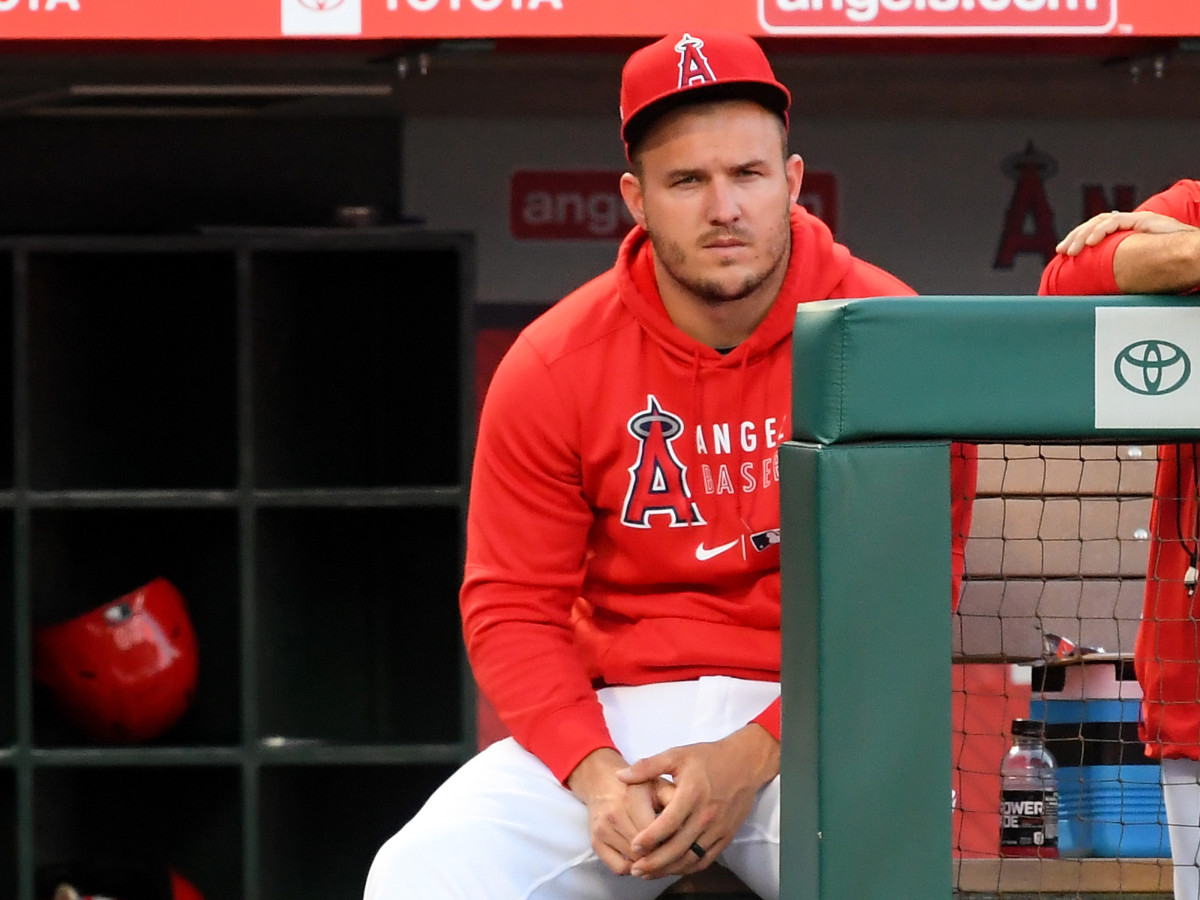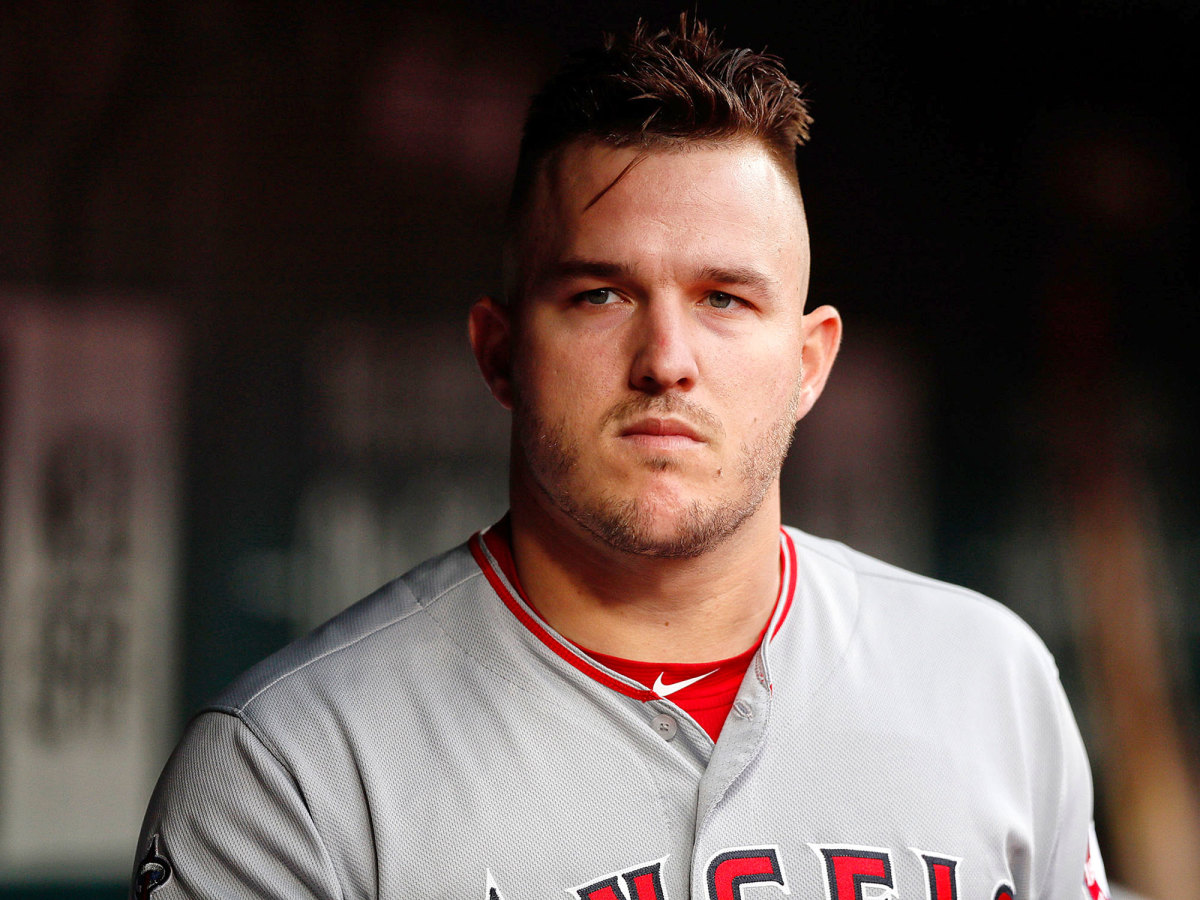Mike Trout's Injuries Symbolize Baseball's Most Pressing Issue

Welcome to The Opener, where every weekday morning you’ll get a fresh, topical column to start your day from one of SI.com’s MLB writers.
The best player in baseball spent his 30th birthday riding a stationary bike and working with blood flow restriction (BFR) bands. Mike Trout of the Angels has not played baseball nor even engaged in baseball activities since May 17, when he strained his right calf and was expected to miss six to eight weeks. It has been 12 weeks, with no sign yet of an imminent return.
The quiet passing of his birthday Saturday was a symbolic one. At 30, Trout is no longer considered a “young player,” having crossed that psychological line into “veteran.” More bittersweetly, measured against one of the best starts ever to a career, it capped the lost prime of Trout.

Over his past five seasons, covering ages 25–29, the traditional prime of a player, Trout has missed 27% of the Angels’ games. Layer the COVID-19-shortened 2020 season over his injuries, and he has averaged only 95 games per year from ages 25 to 29. We’ve lost more than 300 games of prime viewing of someone who was one of the greatest prodigies in baseball history.
At age 24, Trout’s best comp was Mickey Mantle. Since then, based on only volume, not by rate, his best comp is Dave Kingman.
Ages 25–29 | HR | Doubles | Hits | RBI | SF | Total Bases |
|---|---|---|---|---|---|---|
Trout | 142 | 93 | 502 | 319 | 16 | 1045 |
Kingman | 145 | 91 | 509 | 386 | 16 | 1051 |
The biggest story of this baseball season is Shohei Ohtani, Trout’s amazing two-way teammate on the Angels. The next biggest story is how baseball cannot keep its stars healthy. Trout is the face of that narrative.
Three of the players often mentioned in the conversation of “best player in baseball” are hurt: Trout, Ronald Acuña Jr. and Fernando Tatis Jr. The three best pitchers in baseball are on the injured list: Jacob deGrom, Gerrit Cole and Shane Bieber. Other huge stars who can’t play include Alex Bregman, Clayton Kershaw, Francisco Lindor, Anthony Rendon, Stephen Strasburg, Justin Verlander and Anthony Rizzo.
Five of the 10 highest-paid players are out because of health: Trout, Cole, Verlander, Strasburg and Kershaw. The injured list on Sunday included 288 players who have spent an average of 58 days on the IL while collecting $278.7 million not to play. (COVID-19 cases accounted for less than 10% of the IL placements: 26.)
What the oblique is going on? Baseball feared an especially physically taxing season this year while ramping up from the reduced 60-game, two-month season of last year. “I’m worried. We’re heading into unchartered waters,” one chief baseball operator said in March.
Those fears have been realized—and then some. Another club chief baseball operator theorized that change in playing conditions that was not a factor last year could have influenced early injuries. “We went from a hot spring training to cold spring weather and then back to hot,” the executive said. “We didn’t go back-and-forth like that last year. Players were not used to it.”
Pitchers, especially young ones, are running up against workload stresses, innings limits and fatigue. There are only 48 qualified pitchers this season (one inning for every team game), a record low for a full season since 1901. Ten years ago, there were 91. The previous record low was 51 in '46, when there were only 16 teams.
The lack of productivity from young pitchers is especially glaring. It is at an all-time low on a per-team basis. Only six pitchers 25 and under have thrown one inning for every team game. Ten years ago, there were 20.
Shoulder injuries account for the most current IL placements (44). Throwing-related injuries (shoulder, elbow, arm) account for almost half of all injuries (47%). Soft-tissue injuries (oblique, calf, hamstring, etc.) account for 17% of them.
The diagnosis and monitoring of injuries have become more exact—so much so that teams are extremely conservative about placing and keeping players on the IL to avoid risking a more severe injury and lengthier recovery. “Workload management” has become common, but with almost no evidence it is working.
(The irony is that Ohtani has remained healthy while carrying full loads as a DH and as a starting pitcher—just another reason to be amazed by him.)

Like the human population, players are getting thicker. There are twice as many 225-pound qualified hitters this year alone (30) as there were in the first 109 years of pro ball (15 from 1876 to 1984). The overall number of major league players weighing 225 pounds or more has jumped more than tenfold in the past 30 years (from 21 in 1991 to 291 this year).
Trout, who plays at 240 pounds, typifies the toll playing an everyday, skill-based game takes on powerful bodies. Age only increases the toll. Only four qualified players 240 pounds or more played 100 games in the outfield past age 30: Frank Howard, Carlos Lee, Marlon Byrd and Matt Holliday. The potential emergence of rookie Brandon Marsh could mean Trout has played his last game in center field for the Angels.
When Trout was on the field this year for 36 games, he played as wonderfully as ever, if not more so. He tweaked his swing to flatten his stroke, resulting in fewer fly balls and an outrageous .456 batting average on balls in play. His batting average (.333) and on-base percentages (.466) were on career-best tracks.
Then he was felled by the strained calf. He has progressed slowly, with some irritation in the original area of the strain. There is no clear timetable on his return.
His early statistical doppelganger, Mantle, became legendary in the 25–29 window. He did so while rarely missing a game. Mantle missed only 5% of the Yankees’ games in those five prime years. Trout still hits like Mantle, just not as often. When you consider volume, the Mantle-Trout comparison falls apart at ages 25–29:
Ages 25–29 | Games | Hits | HR | RBI | OPS | OPS+ | Postseason Games |
|---|---|---|---|---|---|---|---|
Mantle | 744 | 793 | 201 | 488 | 1.039 | 185 | 47 |
Trout | 477 | 502 | 142 | 319 | 1.072 | 185 | 0 |
Here’s another way to put Trout’s career into context: measuring him against all players in two windows: through his age 24 season and in the 25–29 window, and then with both windows combined:
Trout All-Time Ranks by Age | Thru Age 24 | Ages 25–29 | Thru Age 29 |
|---|---|---|---|
Times on Base | 4 | 623 | 19 |
Walks | 5 | 64 | 12 |
Total Bases | 6 | 577 | 23 |
Home Runs | 7 | 142 | 14 |
Runs | 9 | 201 | 23 |
PA | 9 | 291 | 67 |
Over the past five years, Trout is tied with Albert Almora Jr. in games (123rd) and with Jonathan Villar in hits (67th).
Overall, Trout has played 150 games in a season only four times, all between 2013 and '16. He won two MVPs and was runner-up twice in those years with a slash line of .306/.413/.565 while averaging 33 homers, 20 steals and 100 RBIs.
There always has been a “what if” thread in Trout’s career because he has never won a playoff game. Now another one is growing based on games missed. He is not alone. This year baseball misses his extraordinary skill, as it does with Tatis, Acuña, deGrom, Bieber and some of the finest players on Earth.
More MLB Coverage:
• Breaking Down a Suddenly Depleted NL MVP Race
• How Baseball's Superteam Can Still Be Stopped
• Luck or Magic? Mariners Are Firmly in Postseason Race
• Breaking Down the NL East Race After a Chaotic Trade Deadline
